Petrified Forest National Park
- January 3, 2024
- 0 comment
Located in northeastern Arizona, Petrified Forest National Park stands as a captivating testament to the ancient wonders of the natural world. Spanning over 200 square miles, this unique park is renowned for its striking landscapes, showcasing a vibrant array of petrified wood, eroded badlands, and the awe-inspiring Painted Desert. With a rich history dating back to the late 19th century, the park was once part of pioneering east–west routes along the 35th parallel, marked by wagon roads and the Atlantic and Pacific Railroad.

Visitors can trace the footsteps of early explorers and settlers while marveling at the remnants of Triassic-era petrified trees. Established as a national monument in 1906, the park has evolved into a thriving ecosystem with diverse flora and fauna, making it a haven for nature enthusiasts. From the iconic Painted Desert rim to the intricate Puerco Ruin archaeological site, Petrified Forest National Park offers a journey through time, blending geological wonders with cultural heritage.
Characterizing Features of the Petrified Forest National Park
- Petrified Wood Wonderland: Petrified Forest National Park is renowned for its unparalleled collection of petrified wood, dating back to the Late Triassic period. The park’s landscape is dotted with the fossilized remains of ancient trees, transformed into dazzling stone hues by a process known as mineralization. These magnificent specimens, some reaching over 200 feet in length, serve as captivating witnesses to the prehistoric world that once thrived in this region.
- The Painted Desert’s Mesmerizing Palette: One of the park’s most striking features is the Painted Desert, a mesmerizing expanse of multicolored badlands. The vibrant hues, ranging from red and orange to lavender and gray, create a surreal panorama, especially during sunrise and sunset. Erosion has sculpted the terrain over millions of years, revealing a breathtaking tapestry of geological wonders that captivates the imagination.
- Historic Route 66 Relics: Adding a touch of nostalgia, Petrified Forest National Park encompasses remnants of the iconic Route 66, the “Main Street of America.” While the decommissioned highway once served as a vital transcontinental route, today, visitors can explore preserved sections within the park, harkening back to a bygone era of American road travel.
- Cultural Tapestry of Archaeological Sites: Beyond its geological marvels, the park boasts a rich cultural heritage, evident in archaeological sites like the Puerco Ruin. These ancient dwellings, some dating back over 600 years, provide a glimpse into the lives of the indigenous people who once called this region home. Wander through the petroglyph-laden landscapes, and you’ll find yourself immersed in the stories of past civilizations.
- Diverse Flora and Fauna Oasis: Despite its arid reputation, the park supports a surprising variety of plant and animal life. From the resilient grasses of the semi-desert shrub steppe to the majestic pronghorns and elusive bobcats, Petrified Forest is a living testament to the adaptability of life in harsh environments. The presence of over 200 bird species adds a harmonious melody to the rugged beauty of the landscape.
- Gateway to Geological Time Travel: Petrified Forest offers visitors a unique opportunity to traverse geological time, showcasing rocks and formations that span millions of years. The park’s diverse rock layers, including the colorful Chinle Formation, unveil the Earth’s transformative processes, making it a haven for geology enthusiasts eager to decipher the ancient stories etched in stone.
- Conservation Triumphs and Ongoing Challenges: The park’s journey from a national monument in 1906 to a designated national park in 1962 has been marked by conservation efforts. While protections have helped preserve its natural and cultural wonders, ongoing challenges, such as the theft of petrified wood, persist. Despite vigilant measures, the struggle to safeguard this natural treasure continues.
History
Petrified Forest National Park in northeastern Arizona boasts a rich history that unfolds against the backdrop of its unique geological wonders. In 1853, U.S. Army Lieutenant Amiel Whipple led an expedition along the 35th parallel, discovering a remarkable deposit of petrified wood in the northern part of the Petrified Forest. This exploration marked the beginning of the park’s association with the legendary Lithodendron Creek, aptly named for the stone-like trees lining its banks, dating back to the Triassic period. The mid-19th century witnessed the development of east–west routes along the 35th parallel, including a camel-backed wagon road built between 1857 and 1860. As the region attracted settlers, private stagecoach companies, and later, the Atlantic and Pacific Railroad in the 1880s, towns like Holbrook and Adamana emerged, transforming the landscape.

The allure of petrified wood, coupled with concerns about its preservation, prompted the Arizona Territorial Legislature to appeal to the U.S. Congress in 1895 for the creation of a petrified forest national park. Although the initial attempt failed, President Theodore Roosevelt utilized the Antiquities Act in 1906 to designate the area as the Petrified Forest National Monument, the second national monument in the United States. During the 1930s, the Civilian Conservation Corps played a pivotal role in enhancing the monument, constructing roads, trails, and structures. The government acquired additional land in the Painted Desert section during this period. In 1962, Petrified Forest attained national park status, offering a broader scope for preservation and recognition.
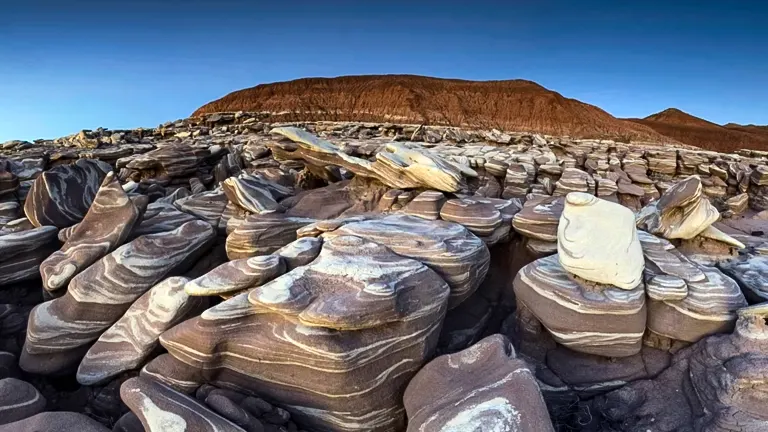
The Wilderness Act of 1964 further safeguarded the park’s pristine areas, limiting human activities to maintain the natural environment. In 2004, a significant expansion was authorized, extending the park’s boundaries from 93,353 acres to 218,533 acres. Despite conservation efforts, challenges persist, with the theft of petrified wood remaining a notable issue. Even with a guard force, fences, warning signs, and penalties, an estimated 12 short tons of fossil wood are pilfered annually, underscoring the ongoing need for vigilance in protecting this geological treasure.
Petrified Forest National Park continues to be a haven for paleontological and archaeological exploration. From the early 20th century excavations by Walter Hough to more recent research by institutions such as the University of California Museum of Paleontology and the Museum of Northern Arizona, the park’s fossil sites number over 300. The 21st century sees a continuation of research in paleontology and archaeology, ensuring that the park’s rich natural and cultural history remains a source of fascination and discovery.
Importance in Conservation and Recreation of Petrified Forest National Park
Petrified Forest National Park stands as a testament to the dual importance of conservation and recreation, weaving together geological wonders, paleontological treasures, and cultural heritage. Conservation efforts within the park are crucial for preserving an unparalleled collection of petrified wood, some dating back to the Triassic period, offering invaluable insights into Earth’s ancient ecosystems. Beyond its geologic significance, the park’s diverse flora and fauna underscore its ecological importance, providing habitats for a variety of species, including pronghorns, black-tailed jackrabbits, and a myriad of bird species.
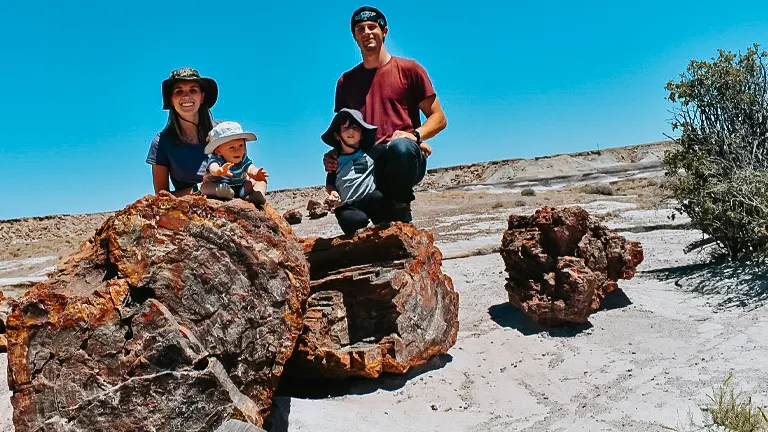
The park’s role in recreation is equally profound, offering visitors a unique blend of natural beauty and cultural exploration. The historic remnants of the Atlantic and Pacific Railroad and the iconic Route 66, now replaced by Interstate 40, highlight the park’s cultural relevance in the development of the American West. Visitors can explore the park through well-maintained hiking trails, each revealing different facets of the landscape, from the Painted Desert Rim to the ancient Puerco Pueblo. Educational programs led by park rangers enhance the visitor experience, providing insights into the region’s paleontological and archaeological significance. This delicate balance between conservation and recreation ensures that Petrified Forest National Park remains a living testament to the Earth’s past while offering a vibrant, accessible space for present-day appreciation and enjoyment.
Unique Location of Petrified Forest National Park
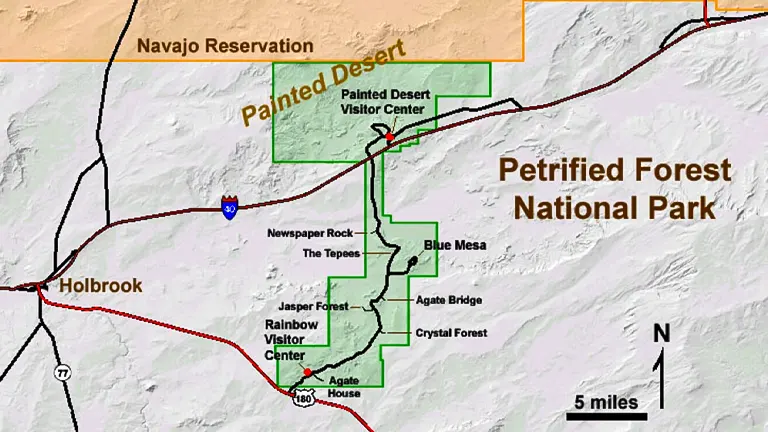
Situated in northeastern Arizona, Petrified Forest National Park stands out due to its distinctive location along the 35th parallel. The park features the renowned Painted Desert, showcasing a striking landscape of eroded badlands and mesas adorned with vibrant colors. This region holds significant paleontological importance, with fossilized remains dating back to the Triassic period, providing insights into ancient ecosystems. Moreover, the park’s historical relevance is underscored by its proximity to Route 66 and the Atlantic and Pacific Railroad, illustrating its role in the westward expansion of the United States. Petrified Forest National Park offers a unique blend of geological wonders, cultural heritage, and transportation history, making it a noteworthy destination for those interested in exploring Earth’s past.
Diverse Vegetation and Plant Species in Petrified Forest National Park
- Blue Grama (Bouteloua gracilis): Flourishing in the semi-desert shrub steppe of Petrified Forest National Park, Blue Grama (Bouteloua gracilis) is a native perennial bunchgrass. Recognized by its slender and graceful appearance, this grass, scientifically known as Bouteloua gracilis, is well-adapted to arid conditions, playing a vital role in the park’s unique grassland ecosystem.
- Galleta Grass (Hilaria jamesii): Another crucial component of the semi-desert shrub steppe, Galleta Grass (Hilaria jamesii) demonstrates drought tolerance and stabilizes the soil. Scientifically identified as Hilaria jamesii, this grass species contributes to wildlife forage, showcasing the resilience of plants in Petrified Forest National Park.
- Alkali Sacaton (Sporobolus airoides): Contributing to the Desert Grassland vegetation form, Alkali Sacaton (Sporobolus airoides) is a native grass species thriving in arid environments with alkaline soils. Scientifically known as Sporobolus airoides, this grass adds diversity to the plant communities, highlighting the ecological intricacies of Petrified Forest National Park.
- Torrey’s Muhly (Muhlenbergia torreyi): Belonging to the Desert Grassland vegetation form, Torrey’s Muhly (Muhlenbergia torreyi) is a native perennial bunchgrass well-suited to the park’s arid climate. Scientifically referred to as Muhlenbergia torreyi, its presence contributes to the overall biodiversity and ecological balance of the grassland environment.
- One-Seed Juniper (Juniperus monosperma): As part of the Juniper/Pinyon Pine vegetation type, One-Seed Juniper adds vertical structure to the landscape. Scientifically known as Juniperus monosperma, this characteristic tree species provides habitat for wildlife, showcasing adaptation to the park’s specific vegetation type.
- Pinyon Pine (Pinus edulis): Thriving in the Juniper/Pinyon Pine vegetation type, Pinyon Pine (Pinus edulis) contributes to the unique character of the landscape. Scientifically referred to as Pinus edulis, this tree species is essential for the ecosystem, providing food for wildlife and participating in the natural regeneration of the forest.
- Big Sagebrush (Artemisia tridentata): Prominent in Petrified Forest National Park, Big Sagebrush (Artemisia tridentata) thrives in the volcanic soils of the Bidahochi Formation. Scientifically identified as Artemisia tridentata, this shrub contributes to the diverse plant life along the Painted Desert rim, enhancing the sensory experience of exploring the park’s landscapes.
- Four-Wing Saltbush (Atriplex canescens): Found in the northern part of the park, Four-Wing Saltbush (Atriplex canescens) adapts to volcanic soils, contributing to vegetation diversity along the Painted Desert rim. Scientifically known as Atriplex canescens, this shrub’s ability to withstand harsh conditions emphasizes the resilience of flora in Petrified Forest National Park.
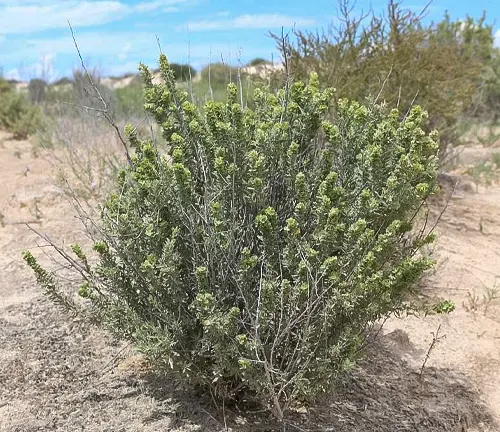
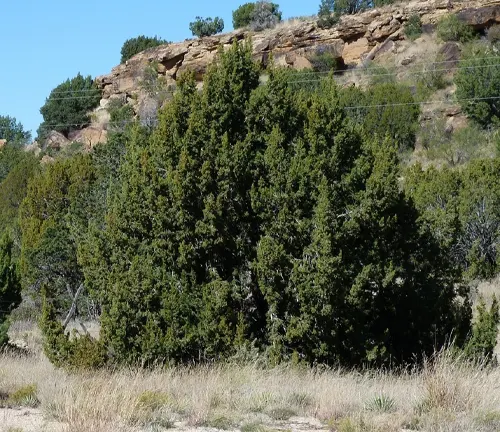
The plant species in Petrified Forest National Park showcase a remarkable array of adaptations, playing crucial roles in the park’s ecosystems. From grasses resilient to arid conditions to trees defining specific vegetation types, each species contributes to the ecological richness of this unique environment.
Fauna
- Pronghorn (Antilocapra americana): Gracefully traversing the grasslands of Petrified Forest National Park, the Pronghorn stands as the fastest land animal in North America. Capable of reaching speeds up to 60 miles per hour, these charismatic creatures showcase unique adaptations crucial for survival in this environment.
- Black-tailed Jackrabbit (Lepus californicus): Roaming the park’s grasslands, the Black-tailed Jackrabbit exhibits remarkable adaptations. Recognized by its large, thin-walled ears serving as heat exchangers, these jackrabbits display bursts of speed and evasive maneuvers to outwit predators like golden eagles, contributing to the intricate web of life in Petrified Forest National Park.
- Gunnison’s Prairie Dog (Cynomys gunnisoni): Inhabiting large colonies or “towns” in the park, Gunnison’s Prairie Dogs play a crucial role in the grassland ecosystem. Their social behavior impacts vegetation structure and provides habitat for various species, adding vitality to the park’s wildlife dynamics.
- Coyote (Canis latrans): Versatile predators found in the park, Coyotes have a diverse diet, including rodents, fruits, reptiles, insects, small mammals, birds, and carrion. Their adaptability contributes to the ecological balance, showcasing the complex relationships within the ecosystem of Petrified Forest National Park.
- Bobcat (Lynx rufus): Elusive hunters in riparian zones, Bobcats specialize in capturing smaller animals such as deer mice and white-tailed antelope squirrels. Their presence reflects the biodiversity within the park’s diverse habitats, adding a sense of wilderness to the riparian corridors.
- Fox (Vulpes vulpes): Inhabiting Petrified Forest National Park, Foxes contribute to the carnivore diversity. As omnivores, they play a role in controlling rodent populations, contributing to the overall health of the ecosystem and offering insights into the natural behaviors of adaptable wildlife in the park.
- Greater Short-horned Lizard (Phrynosoma platyrhinos): Thriving in various habitats, the Greater Short-horned Lizard is among the diverse reptile species in the park. Consuming large quantities of insects, spiders, scorpions, and other reptiles, these lizards highlight the reptilian diversity contributing to the intricate food webs of Petrified Forest National Park.
- Prairie Rattlesnake (Crotalus viridis): The only venomous snake in the park, the Prairie Rattlesnake, prefers grasslands and shrub areas. Playing a crucial role in controlling rodent populations, understanding their habits and habitats contributes to visitor safety awareness and an appreciation for the biodiversity within the park.
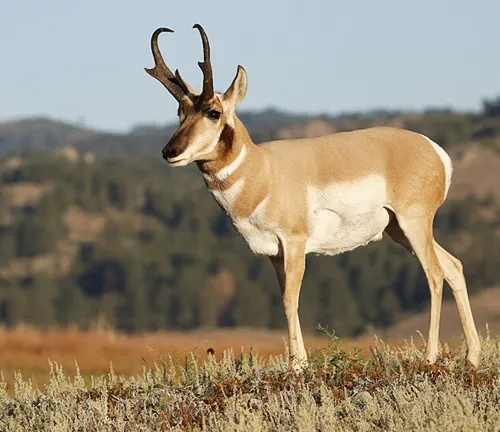
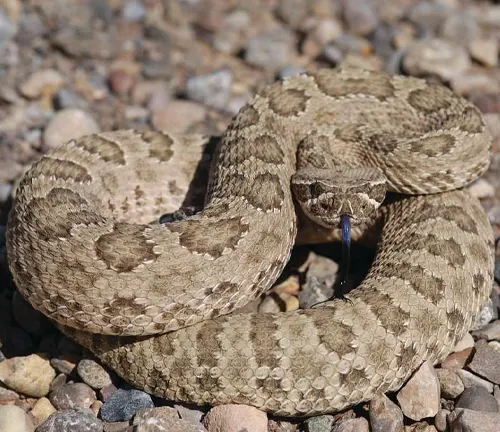
The fauna of Petrified Forest National Park encompasses a diverse array of species, each playing a unique role in the park’s ecosystems. From the swift pronghorns to the elusive bobcats and the resilient prairie rattlesnakes, these animals contribute to the richness and complexity of the park’s natural heritage.
Attractions in Petrified Forest National Park
1. Painted Desert Rim

One of the foremost attractions in Petrified Forest National Park is the stunning Painted Desert Rim. Here, the landscape undergoes a breathtaking transformation with vibrant colors that change throughout the day. The eroded badlands, showcasing a palette of reds, purples, and oranges, offer a mesmerizing backdrop against the ancient petrified wood, creating a visual spectacle that captures the essence of the park’s geological wonders.
2. Puerco Pueblo
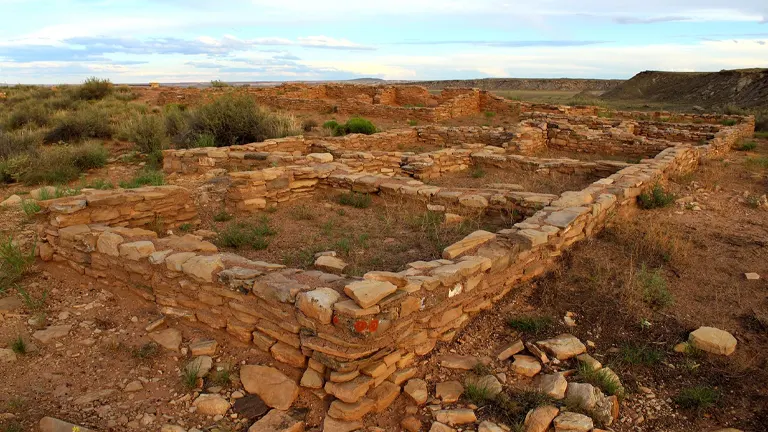
Puerco Pueblo stands as a testament to the park’s rich cultural history. This archaeological site preserves the ruins of an ancient Native American village, providing a glimpse into the lives of past inhabitants. Visitors can explore the remnants of structures, petroglyphs, and artifacts, unraveling the mysteries of human presence in the region dating back centuries, adding a cultural layer to the park’s attractions.
3. Blue Mesa
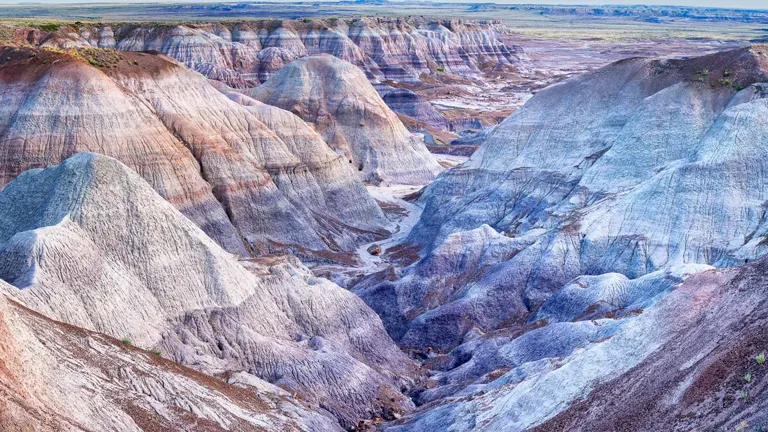
Blue Mesa presents a unique geological landscape characterized by blue-hued badlands and intricate formations. The layered deposits of siltstone and mudstone create an otherworldly environment, inviting visitors to embark on a journey through time. The Blue Mesa trail allows for an up-close experience with the fascinating geological features, offering both a visual and educational adventure.
4. Crystal Forest
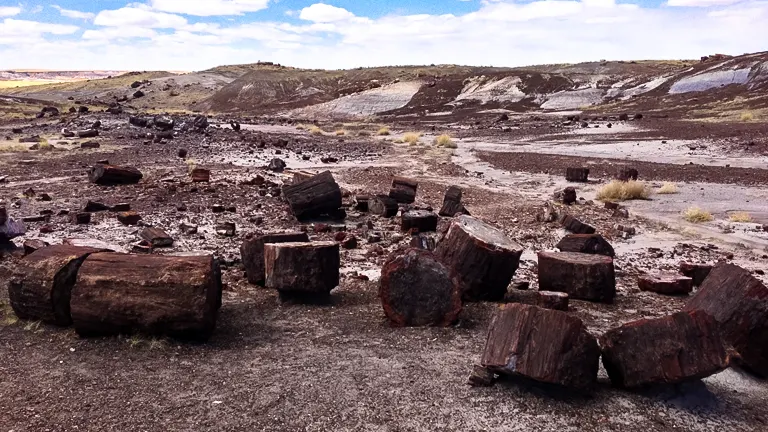
Crystal Forest is a natural treasure trove within the park, showcasing a dense concentration of beautifully preserved petrified wood. The remnants of ancient trees, turned into brilliant crystals through the process of fossilization, are scattered across the landscape. Walking through Crystal Forest allows visitors to appreciate the sheer diversity and abundance of these mesmerizing geological formations.
5. Giant Logs
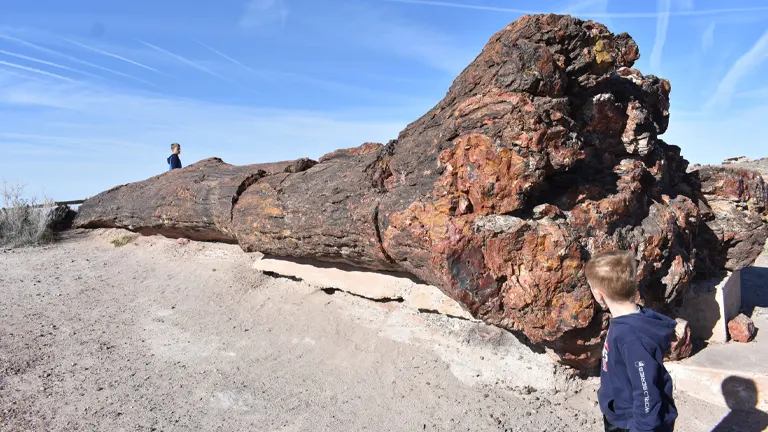
The Giant Logs area features some of the largest and most well-preserved petrified logs in the park. These ancient giants, transformed into stone over millions of years, serve as silent witnesses to the prehistoric landscapes that once dominated the region. The sheer size and number of logs in this area provide a sense of awe and wonder, emphasizing the geological significance of the petrified wood.
6. Long Logs
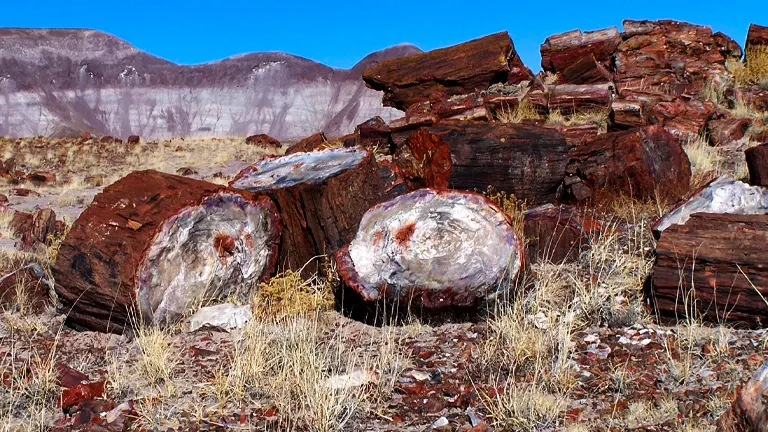
Long Logs extends the narrative of petrified wood, offering a different perspective on the diverse forms created by fossilization. The elongated logs, scattered across the landscape, showcase the intricate details of the petrification process. Exploring this area provides an insight into the geological forces that shaped the ancient trees into the remarkable long logs seen today.
7. Agate House
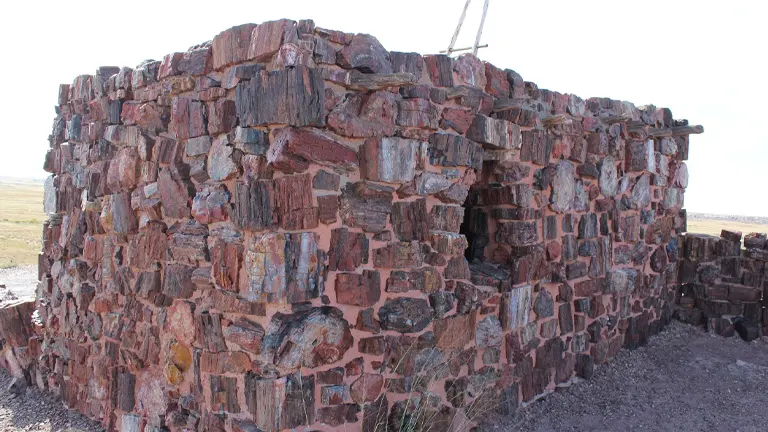
Agate House represents an archaeological gem within the park, where visitors can witness the reconstruction of an ancient Puebloan structure. Built using petrified wood, Agate House offers a tangible connection to the resourcefulness and craftsmanship of the early inhabitants. This site adds a cultural and historical dimension to the park’s attractions, highlighting the intersection of human history and geological wonders.
Petrified Forest National Park stands as a repository of geological marvels and cultural heritage. From the vivid landscapes of the Painted Desert Rim to the ancient remnants at Puerco Pueblo, each attraction invites exploration and contemplation. These diverse sites collectively weave a narrative of the park’s rich history, spanning millions of years and providing visitors with a profound appreciation for the natural and cultural tapestry of this unique destination.
Recreational Activities in the Petrified Forest National Park
1. Hiking Trails

Petrified Forest National Park offers seven maintained hiking trails, each providing a unique perspective on the park’s diverse landscapes. From the expansive vistas along the Painted Desert Rim trail to the immersive experiences within the Blue Mesa and Crystal Forest trails, hiking enthusiasts can explore a range of geological wonders. The trails cater to varying difficulty levels, accommodating both casual strollers and avid hikers seeking a more challenging adventure.
2. Visitor Centers and Museums

The park features well-equipped visitor centers and museums, including the Painted Desert Visitor Center and the Rainbow Forest Museum. These facilities serve as gateways to understanding the park’s geological and cultural heritage. Visitors can engage with informative exhibits, watch orientation films like “Timeless Impressions,” and access a wealth of resources that enhance their overall experience.
3. Geological Tours

For those eager to delve deeper into the geological mysteries of the park, guided tours and ranger programs are available. Knowledgeable rangers lead tours along designated routes, providing insights into the formation of the petrified wood, the unique features of the Painted Desert, and the historical significance of archaeological sites. These tours offer a more immersive understanding of the park’s natural wonders.
4. Cultural and Educational Programs
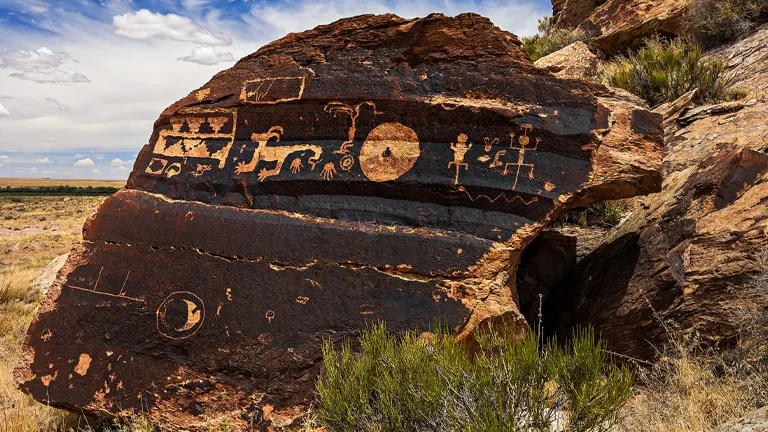
Petrified Forest National Park hosts a range of cultural and educational programs aimed at enriching visitors’ perspectives. From Puerco Pueblo guided walks to Triassic programs at the Rainbow Forest Museum, these events delve into the cultural history and scientific aspects of the park. Special events during Earth Science Week and National American Indian Heritage Month further contribute to the educational offerings.
5. Photography Opportunities
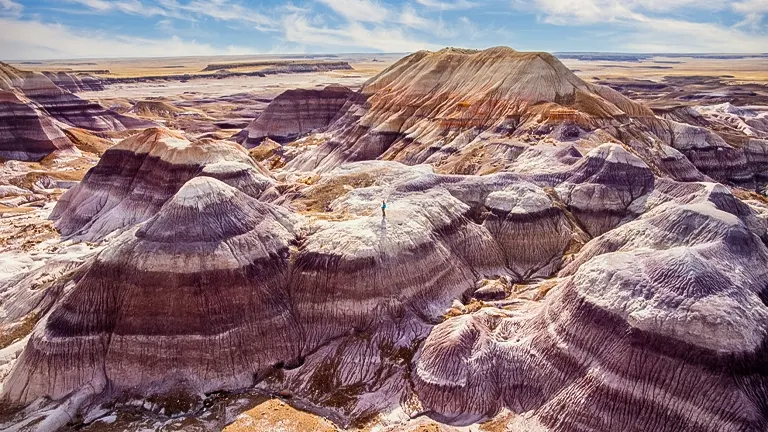
The park’s ever-changing landscapes, vibrant colors, and unique geological formations make it a haven for photography enthusiasts. Whether capturing the vivid hues of the Painted Desert at sunrise or the intricate details of petrified wood in Crystal Forest, photographers can find endless opportunities to document the park’s beauty.
6. Cultural Demonstrations
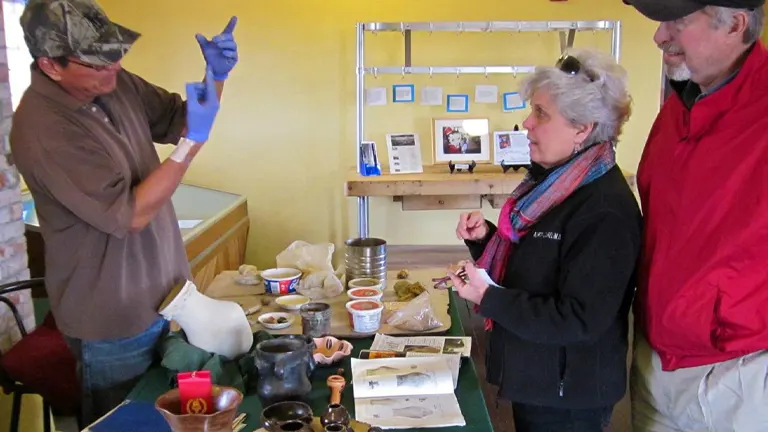
On Saturdays from Memorial Day weekend through Labor Day, the Painted Desert Inn hosts artisans who provide cultural demonstrations. These demonstrations offer visitors a chance to engage with the artistic and cultural practices of the region, fostering a deeper appreciation for the interconnectedness of ancient peoples, intertribal relationships, and European-descent cultures.
7. Wilderness Exploration
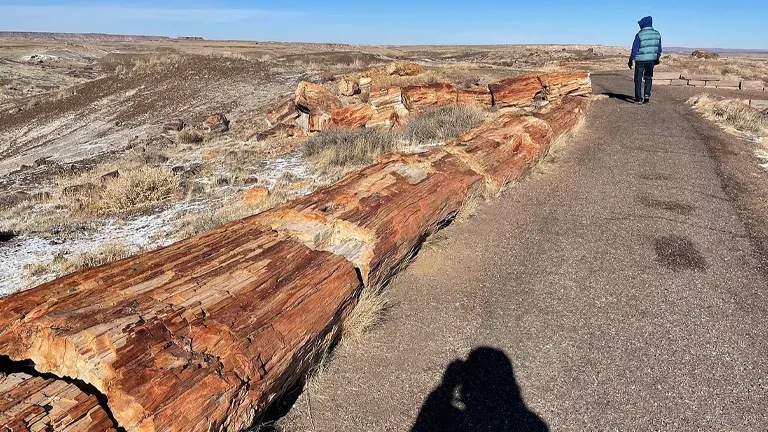
For those seeking a more rugged adventure, Petrified Forest National Park offers wilderness areas accessible by hiking. Backpackers can obtain permits for overnight stays and explore the park’s less-traveled regions. This immersive experience allows for a closer connection to the natural environment and a firsthand encounter with the park’s diverse flora and fauna.
The recreational activities at Petrified Forest National Park cater to a broad spectrum of interests, ensuring that visitors can tailor their experience to align with their preferences. Whether it’s a leisurely hike, an educational program, or a photographic expedition, the park invites exploration and appreciation for the wonders it holds.
Facilities and Amenities in Petrified Forest National Park
- Visitor Centers: Petrified Forest National Park boasts two visitor centers – the Painted Desert Visitor Center and the Rainbow Forest Museum. The modernist architecture of the Painted Desert Visitor Center, designed by Richard Neutra, adds to the cultural and historical significance of the park. These centers serve as gateways to the park, providing essential information, exhibits, and orientation movies like “Timeless Impressions,” offering visitors a comprehensive introduction to the park’s geological and cultural wonders.
- Historic Painted Desert Inn: The Painted Desert Inn, a National Historic Landmark, stands as a testament to the park’s history. Located 2 miles north of the Painted Desert Visitor Center, this inn-turned-museum showcases the rich cultural heritage of the region. Visitors can explore exhibits, including the building itself, offering insights into early 20th-century architecture and the individuals who shaped the park’s development.
- Hiking Trails: Petrified Forest National Park provides seven maintained hiking trails, varying in length and showcasing the park’s diverse landscapes. From the Painted Desert Rim Trail offering panoramic views to the Giant Logs Trail featuring ancient petrified trees, these trails allow visitors to immerse themselves in the park’s natural beauty. Additionally, the recently developed “Off the Beaten Path” hikes offer adventurous routes for those seeking a more secluded experience.
- Educational Programs and Events: Rangers at Petrified Forest offers a range of educational programs, including guided tours, talks, and walks. Special events related to Earth Science Week and National American Indian Heritage Month provide unique opportunities for visitors to deepen their understanding of the park’s geological wonders and cultural significance. The park’s commitment to education extends to students and teachers, with rangers providing materials and talks for enriching field trips.
- Gift Shops and Bookstores: Both visitor centers feature gift shops and bookstores, allowing visitors to take home a piece of Petrified Forest National Park. From books and souvenirs to unique items crafted by regional artisans, these shops offer a chance to support local communities and commemorate the park experience.
- Restaurants and Food Services: The Painted Desert Inn includes a restaurant open from 8 a.m. to 3 p.m., providing a dining option within the park. This allows visitors to enjoy a meal while surrounded by stunning landscapes. The availability of food services adds to the overall visitor experience, ensuring that guests can refuel and relax during their exploration of the park.
- Restrooms and Facilities: Public restrooms are conveniently located at the visitor centers, ensuring that visitors have essential facilities throughout their park visit. These facilities contribute to the comfort and accessibility of the park, allowing guests to focus on enjoying the natural wonders without concern for basic amenities.
- National Register of Historic Places Sites: Petrified Forest National Park encompasses several sites listed on the National Register of Historic Places. These include the Painted Desert Inn and associated cabins, the Agate House Pueblo, Petroglyphs and Ruins Archeological Districts, and more. Exploring these sites provides a glimpse into the cultural history and archaeological richness that complements the park’s geological marvels.
Together, these facilities and amenities create a comprehensive and enjoyable experience for visitors to Petrified Forest National Park, blending natural wonders with cultural and historical insights.
Tips for Visiting Petrified Forest National Park
- Plan for Seasons: Petrified Forest National Park experiences varying weather conditions throughout the year. While the park is open year-round, visitors should plan accordingly. Summers can be hot, with temperatures exceeding 100°F, so carrying sufficient water, sunscreen, and appropriate clothing is essential. Spring and fall offer more moderate temperatures, making these seasons ideal for exploration.
- Exploring the Painted Desert Rim: The Painted Desert Rim provides breathtaking panoramic views. To make the most of this experience, visit during the early morning or late afternoon when the sun’s angle enhances the vibrant colors of the landscape. The Painted Desert Inn, situated along this rim, offers a historic and scenic stop for visitors.
- Hiking Trails and Trail Etiquette: Petrified Forest offers several hiking trails catering to various fitness levels. Before embarking on a hike, obtain trail maps and information from the visitor centers. Remember to stay on designated paths to preserve the delicate ecosystem, and respect trail guidelines to ensure a safe and enjoyable experience.
- Wildlife Observation: Keep a keen eye out for the diverse wildlife within the park. From pronghorns and jackrabbits to coyotes and various bird species, the park is a haven for nature enthusiasts. Binoculars and a camera can enhance your wildlife observation experience while maintaining a respectful distance.
- Photography Tips: The park’s unique landscapes, including the iconic petrified wood, offer excellent photography opportunities. Capture the play of light and shadows on the ancient logs during different times of the day. Sunrise and sunset often provide dramatic lighting, enhancing the visual appeal of the petrified wood and the surrounding terrain.
- Cultural and Historical Exploration: Immerse yourself in the cultural and historical aspects of the park by exploring sites such as the Painted Desert Inn and Puerco Pueblo. Ranger-led programs and talks provide insights into the park’s rich history, from ancient Native American cultures to the development of the park as a national treasure.
- Visitor Center Resources: Utilize the resources available at the visitor centers, including orientation movies, exhibits, and ranger-led programs. The Painted Desert Visitor Center and Rainbow Forest Museum provide valuable information about the park’s geological wonders, flora, fauna, and cultural heritage.
- Preservation and Leave No Trace: Help preserve the park’s natural and cultural resources by adhering to the principles of Leave No Trace. Refrain from collecting rocks, fossils, or artifacts, as these contribute to the park’s conservation efforts. Stay on marked trails to minimize impact on fragile ecosystems.
- Stargazing Opportunities: Petrified Forest National Park is designated as a Dark Sky Park, offering excellent stargazing opportunities. If visiting in the evening, especially during clear nights, take advantage of the unobstructed views of the night sky. Consider bringing binoculars or a telescope for an enhanced celestial experience.
- Check Park Operating Hours: Before planning your visit, check the park’s operating hours, which may vary with the seasons. This ensures that you have ample time to explore the attractions and enjoy the facilities offered within the park.
By incorporating these tips into your visit, you can make the most of your time at Petrified Forest National Park, enjoying its natural beauty while respecting its ecological and historical significance.
Recommendation
I strongly recommend exploring Petrified Forest National Park for a captivating amalgamation of natural marvels and historical importance. Renowned for its varied ecosystems, iconic features, and recreational options, this park offers a unique and immersive adventure. Embrace serene outdoor activities such as hiking and observing wildlife, actively contributing to ongoing conservation efforts. The scenic trails, historical points of interest, and collaborative conservation programs position Petrified Forest National Park as a must-visit destination, providing a harmonious union of nature and recreational exploration.
Conclusion
In conclusion, Petrified Forest National Park stands as a testament to the intricate tapestry of geological wonders, prehistoric remnants, and vibrant ecosystems. Its rich history, from the expeditions of early explorers to the conservation efforts that shaped its present form, adds layers of significance to the landscape. The park’s unique position along the 35th parallel, coupled with its diverse flora and fauna, showcases the resilience of life in the arid southwestern region. Visitors are not only treated to the mesmerizing spectacle of petrified wood but also immersed in a living environment where pronghorns sprint across grasslands, and ancient ruins whisper tales of the past. Petrified Forest National Park, with its blend of scientific intrigue, natural beauty, and recreational opportunities, invites all who venture within its boundaries to witness the profound connections between time, nature, and human history.
FAQs
- Why is it called Petrified Forest National Park?
The park earned its name due to the extensive deposits of petrified wood found within its boundaries. Over millions of years, fallen trees became mineralized, creating a unique and mesmerizing landscape. - How old are the petrified trees in the park?
The petrified trees in the park date back to the Late Triassic period, approximately 225 million years ago. These ancient specimens offer a glimpse into Earth’s prehistoric past. - What is the significance of the 35th parallel in relation to the park?
The 35th parallel played a crucial role in the park’s exploration and development. Early expeditions, including Lieutenant Amiel Whipple’s survey, followed this parallel, leading to the discovery of petrified wood and influencing transportation routes. - Are there any living trees in Petrified Forest National Park?
While the petrified trees are ancient remnants, the park is home to a variety of living vegetation, including grasses, shrubs, and trees such as junipers and pinyon pines. - How did camels contribute to the park’s history?
In the late 1850s, camels were used experimentally as transport along a wagon road near the 35th parallel. This unique chapter in the park’s history reflects attempts to find suitable transportation methods in the arid landscape. - What conservation efforts are in place to protect the petrified wood?
The park faces challenges such as the theft of petrified wood. To counter this, there is a guard force, fences, warning signs, and fines. Conservation initiatives aim to preserve this natural treasure for future generations. - Why did the park transition from a national monument to a national park?
Initially designated as a national monument in 1906, Petrified Forest gained national park status in 1962, signifying its expanded significance and the need for increased protection and recognition. - How many species of flora and fauna can be found in the park?
The park boasts a rich biodiversity, with approximately 447 species of flora, including both native and invasive species. Its grasslands are home to diverse wildlife, from pronghorns and jackrabbits to various bird species.
As you wrap up your time at Petrified Forest National Park, take a moment to reflect on the unique blend of history and nature this place has to offer. From the mesmerizing petrified wood to the diverse wildlife, each step unveils a piece of the past. Whether you’ve strolled through ancient ruins or hiked the scenic trails, the park leaves you with a sense of wonder. So, as you bid adieu to the petrified wonders and wide-open landscapes, carry with you the tranquility of this timeless terrain. Until next time, Petrified Forest National Park extends a warm goodbye, inviting you to return and explore its treasures again.


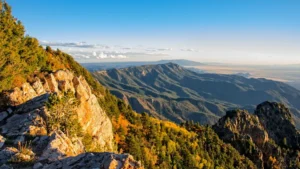
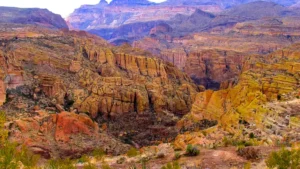
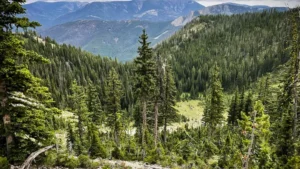

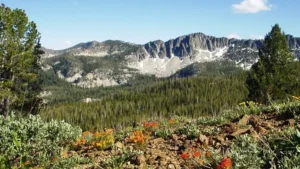



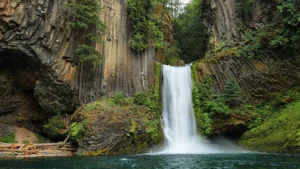
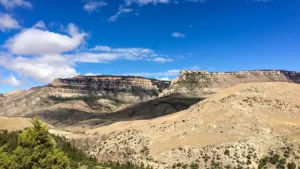
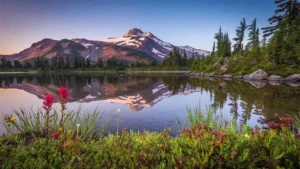

Leave your comment